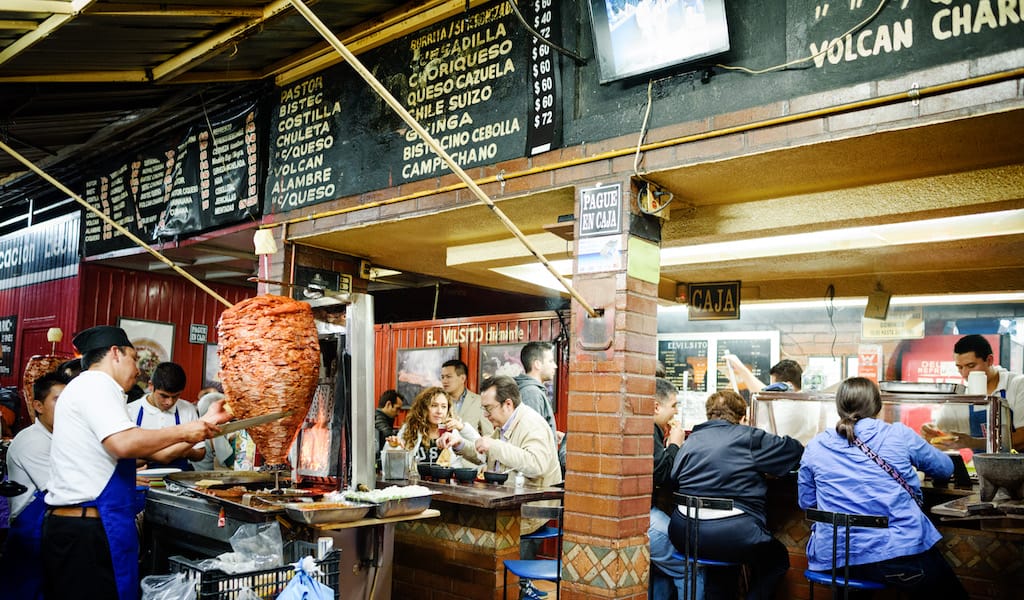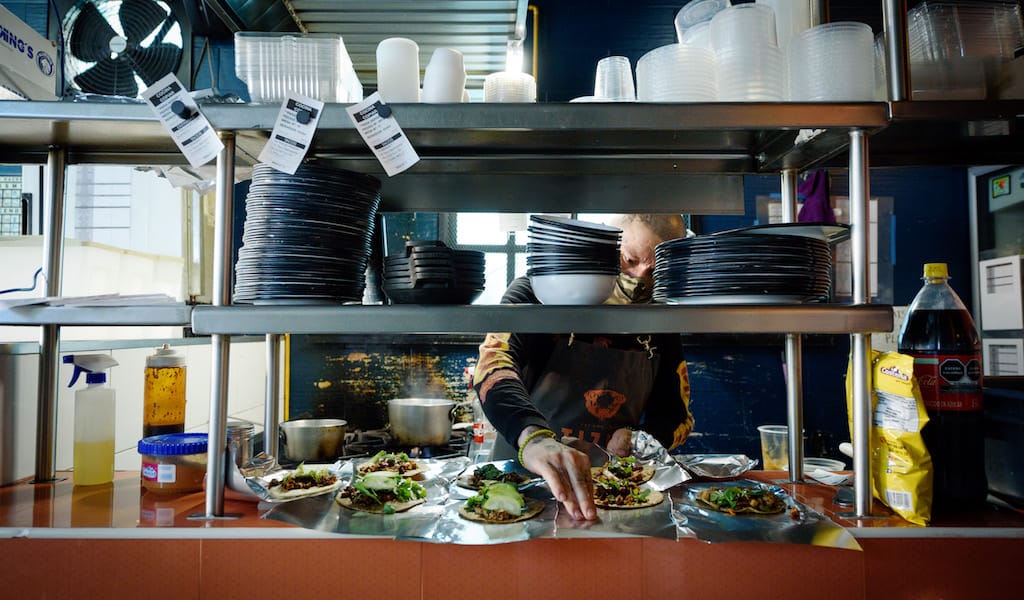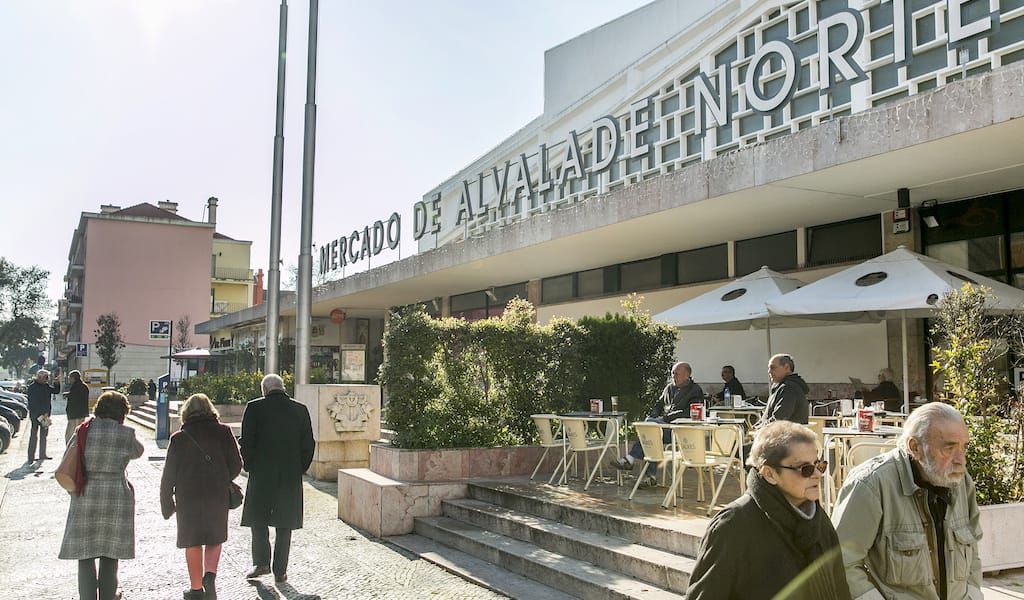As the calendar year turns over, we’ve grown accustomed to the barrage of lists telling us where to travel during the next 12 months. Often these places are a country or even a whole region – you could spend an entire year exploring just one of the locations listed and still barely make a dent.
We like to travel on a smaller scale. Forget countries and cities, for us the neighborhood is the ideal unit of exploration. Celebrating neighborhood life and businesses is, of course, essential to what we do as Culinary Backstreets. Since our founding in 2012, we’ve been dedicated to publishing the stories of unsung local culinary heroes and visiting them on our food walks, particularly in neighborhoods that are off the beaten path.
Plus, we recognize that tourism, while a justifiably important economic force in many cities, can devastate the urban ecosystem if not distributed responsibly into neighborhoods otherwise neglected by the travel industry. To help that process along, two years ago we launched an annual “Neighborhoods to Visit” guide, featuring areas off the main tourist trail from all the cities that we cover.
Yet as various other annual “must-visit” guides have made clear, following the same formula year after year can lead to selecting destinations solely for the purpose of a complete list. So we’re changing it up in 2020, focusing on a smaller selection of neighborhoods (as well as the people and places that keep them going) that truly deserve the extra attention. Below is a compilation of six less-visited areas that our correspondents are eager to explore this year:
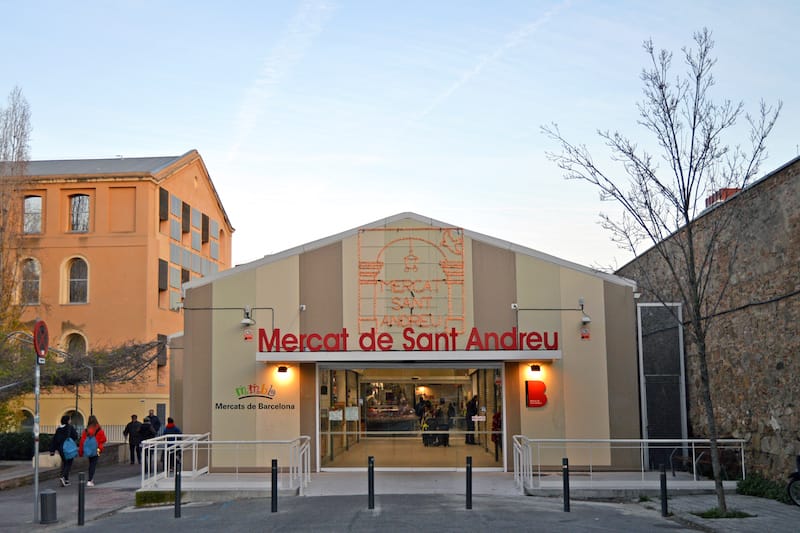
Barcelona: Sant Andreu
 The area surrounding Barcelona’s central Eixample district is a colorful patchwork of old villages, with the neighborhood of Sant Andreu being one of the most inviting. Scattered among the modern buildings are narrow streets lined with small two-story houses, the quiet punctuated by the sound of kids playing. Adding to the unique personality of this neighborhood, which is far from the city’s tourist and business hubs, are the old factories transformed into creative centers and the beautiful historic church of Sant Andreu del Palomar, a 19th-century construction built on the site of the original 10th-century church that gave this area its name.
The area surrounding Barcelona’s central Eixample district is a colorful patchwork of old villages, with the neighborhood of Sant Andreu being one of the most inviting. Scattered among the modern buildings are narrow streets lined with small two-story houses, the quiet punctuated by the sound of kids playing. Adding to the unique personality of this neighborhood, which is far from the city’s tourist and business hubs, are the old factories transformed into creative centers and the beautiful historic church of Sant Andreu del Palomar, a 19th-century construction built on the site of the original 10th-century church that gave this area its name.
The combination of a village-like atmosphere with all the amenities of a city has made Sant Andreu an attractive place for young locals, artists and entrepreneurs. They relish the relative quiet, the pretty old center with its own market, and the lower housing prices. It doesn’t hurt that the neighborhood is well equipped with sports facilities, modern cultural centers like Fabra i Coats (formerly a cotton spinning mill), and one of the hippest and most innovative co-working centers in the city, the Canòdrom (the old dog racing track).
With a slew of new bars and restaurants opening in recent years, Sant Andreu is also becoming an attractive area for hungry diners. In terms of openings, however, perhaps the most anticipated of the year is the renovated Sant Andreu market, which first opened in 1906 and is located in a delightful porticoed square. While the historic local market is under restoration, we can still visit our favorite vendors at their temporary home in front of Fabra i Coats.
But the neighborhood also has its share of classic spots, like Taverna Can Roca, a century-old bodega that morphed into a restaurant in 1952. It has long been famous for traditional Catalan esmorsar de forquilla (“fork breakfasts”) and still is, but with an updated style. Albert Oltra, a well-known chef in Barcelona and the owner of the masía Can Piqué, took over the spot in 2016. Since then, the cooking has been modernized, although it’s still rooted in traditional recipes, and the décor was been slightly updated, complimenting the beautiful old tiles and enhancing the charm of the space. We are currently enamored with their various rice dishes, the pig feet cannelloni, and the scallops with Iberian pork dewlap.
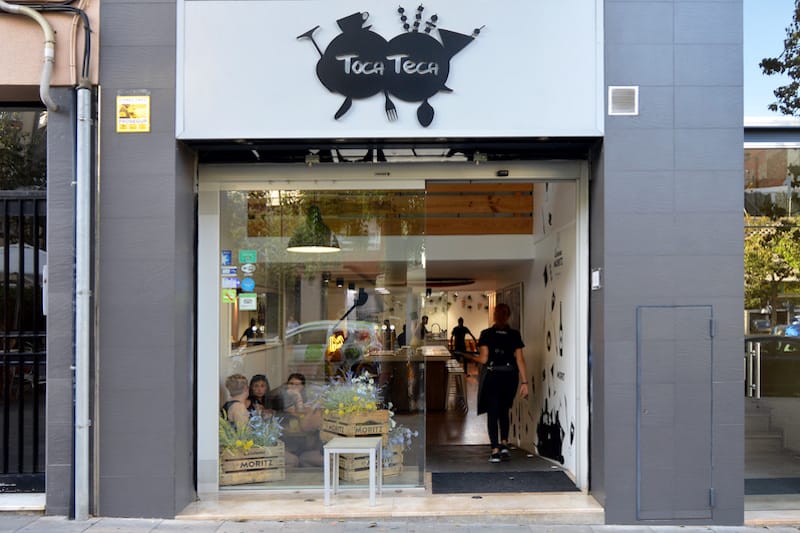
Nearby is another great food landmark, Rabasseda, located inside the arcade surrounding the old market. While the market’s restoration works have made the area noisier and dustier, this restaurant is still valued for its cuisine and its lovely terrace under the arcade (although perhaps better to visit once the renovated market opens). For now, you can find us at their bar, which provides a good perch to take in the hustle and bustle of the place and isn’t far from the kitchen, where chef Narçis Rabassa dexterously handles the pans, cooking up their excellent cod recipes.
We would be remiss not to mention the most iconic bodega in the neighborhood, the small and charming Bodega Lluis, the perfect refuge for a vermut. Opened in 1955, the bodega is packed during aperitif time, serving beer, wine and vermut along with tapas like gildas (olives, peppers and anchovies skewered on a stick), olives, chips, cockles and anchovies.
When we want something a bit more upscale, we head to Toca Teca. Opened by María Cots and Guillem Carulla in 2012, this modern restaurant puts out excellent little tasting plates to share (or not), some of our favorites being the slow-cooked bull tail, the excellent Andalusian-style fried squid, and their famous scallops a la carbonara.
Finally, for lovers of Catalan Modernisme (Catalan Art Nouveau), Bar Versalles is a shining example. The bar and restaurant has a long history – it opened in 1915, although it has since been renovated – and retains much of its beautiful original furniture. The menu features a long list of classic tapas, dishes and vermut aperitif, as well as hot and cold sandwiches for breakfast. For big groups, the underground dining room, which used to be a bomb shelter during the Spanish Civil War, offers an atmospheric experience. – Paula Mourenza
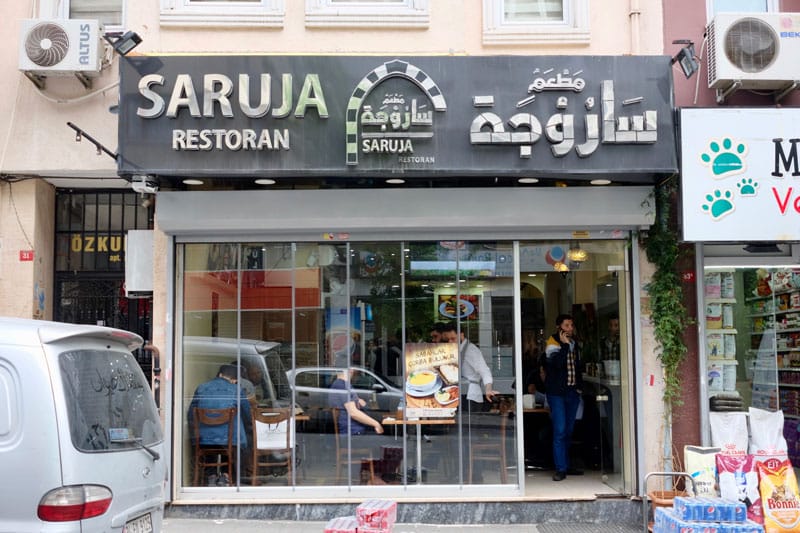
Istanbul: Fatih/Akşemsettin Street
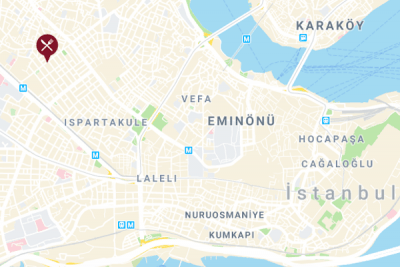 Though Fatih is a district in Istanbul, one that encompasses the entirety of the old city and all of its historic glory, and home to a variety of neighborhoods (including Samatya and Yedikule, which were our Istanbul neighborhood guide selections for 2019), for many Istanbullites the term recalls the areas located in close proximity to the expansive Fatih mosque complex. Among these include the Çarşamba quarter, which is home to one of the country’s most influential Islamic religious orders and among the most conservative places in the city.
Though Fatih is a district in Istanbul, one that encompasses the entirety of the old city and all of its historic glory, and home to a variety of neighborhoods (including Samatya and Yedikule, which were our Istanbul neighborhood guide selections for 2019), for many Istanbullites the term recalls the areas located in close proximity to the expansive Fatih mosque complex. Among these include the Çarşamba quarter, which is home to one of the country’s most influential Islamic religious orders and among the most conservative places in the city.
Many neighborhoods in the district have also become home to large populations of Syrian refugees following the outbreak of civil war in that country, with entire streets now lined with a variety of shops and restaurants run by Syrians. Among these is Akşemsettin Street, which runs between the M1 metro line and the main avenue where the Fatih mosque is located. Over the past several years, we’ve made a number of discoveries on and around this street, which is why we are excited to include it among our neighborhoods to explore in 2020.
Among the most popular establishments on the street is Saruja, which serves Damascus-style home cooking, including a heady serving of mulukhiyah leaves (a vegetable we had never tried before) served over rice and topped with shredded chicken and cashews. Across the street is Bouz Al-Jidi, a tiny, narrow restaurant with only a few tables that is nevertheless smartly decorated, with the charming waiters donning spiffy uniforms. On the (nonexistent) menu are Syrian staples like falafel and fatteh; two of us had trouble finishing a single portion of the latter, enjoying dipping pita bread in the cold leftovers later that evening. The falafel wraps are formidable and cost just 6 TL with a complimentary glass of ayran.
Nearby is Hadramot, a two-story Yemeni restaurant that was among our favorite discoveries in 2016, where we reveled in Yemen’s national dish of salteh, a hearty, complex stew of meat and vegetables where the various flavors are united by a dollop of pastel green fenugreek drizzled on top. It’s served with fresh, hot flatbread not unlike Indian naan. Other delicious dishes include perfectly seasoned chicken or lamb atop a large bed of saffron rice, while an ambitious juice bar serves a range of fresh-squeezed, refreshing beverages including a neon-green lemonade made with freshly minced mint leaves. The building’s sign in Latin characters remains on the left hand side of its facade, but the Arabic equivalent on the right has been removed, a consequence of the government cracking down on businesses with Arabic signage in recent years.
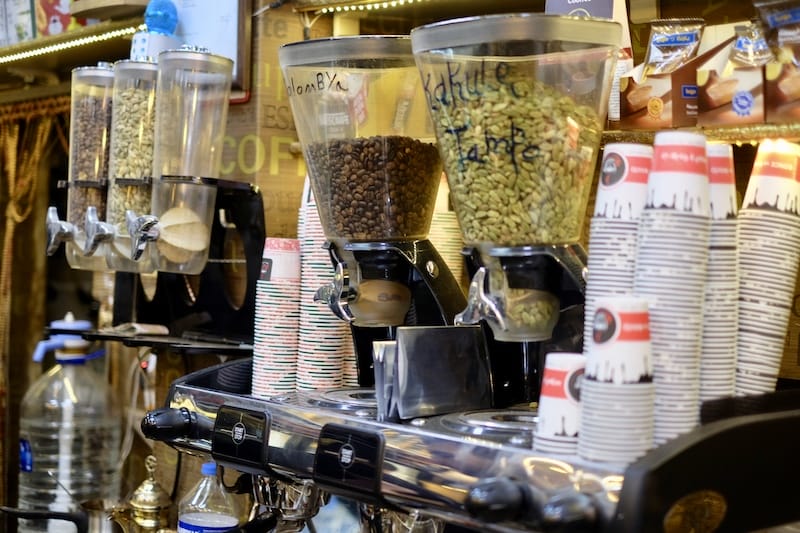
Akşemsettin Street is dotted with shops serving Syrian shwarma and fried chicken, as well as those selling Syrian-style cheese and olives, just slightly different from their Turkish counterparts and often produced in the border province of Hatay. On one corner is Keyfine Göre Falafel, around which a cluster of hungry patrons have gathered just shy of 5 p.m. to purchase their fresh, crispy, made-to-order falafel wraps (6 TL) as well as packages of Syrian-style flatbread to take home.
The street abruptly changes names to Mütercim Asim before the main intersection, and near this corner can be found Muhtar Tatlı and Cafe, which offers a decadent and tantalizing array of Syrian desserts, where the seductive green hue of pistachio seems to have permeated everything. Steps later one encounters Fevzi Paşa Avenue, a wide boulevard where most of the buildings seem to be full of kebab joints and clothing stores selling wedding gowns and other attire that is appropriate for a conservative Islamic dress code.
There are certainly no shops in sight to purchase alcohol, let alone a restaurant serving it. But a few minutes away, at the very end of Islambol Street, a narrow pedestrian alley adjacent to the Fatih mosque complex, is Bonce ve Mevid, a hole-in-the-wall coffee stand that serves excellent Syrian-style coffee. This brew is akin to the Turkish variety but with the added benefit of a strong dose of freshly ground cardamom seeds, which sit above the espresso machine in a container next to the beans. A small cup of this sensational brew is just 3 TL, and is the perfect way to end your Syrian culinary excursion in Fatih. – Paul Benjamin Osterlund
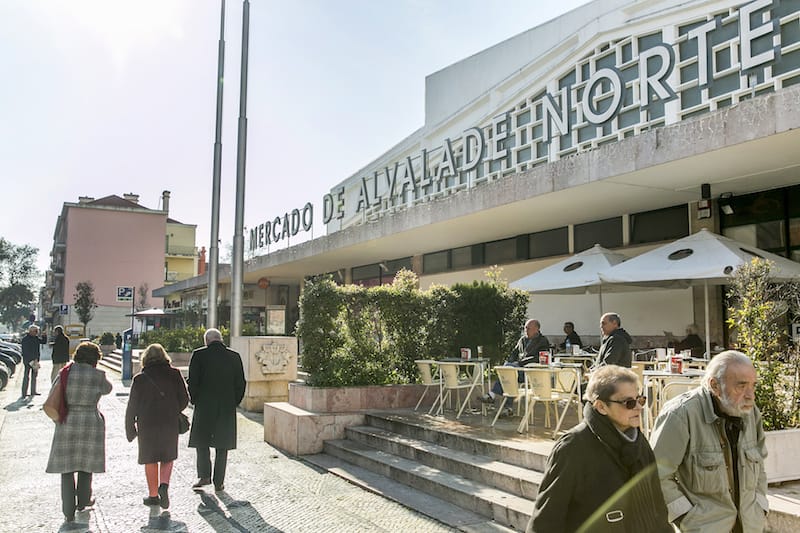
Lisbon: Alvalade
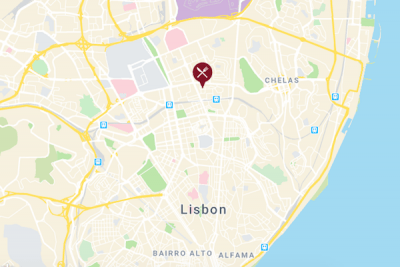 Close to the airport, the neighborhood of Alvalade is on the periphery of Lisbon. But its distance from the city center has perhaps been a blessing in disguise, preserving the vibrancy of this residential neighborhood.
Close to the airport, the neighborhood of Alvalade is on the periphery of Lisbon. But its distance from the city center has perhaps been a blessing in disguise, preserving the vibrancy of this residential neighborhood.
Designed and built in the 1940s, Alvalade was mostly built over farms and agricultural fields. Its modernist urban plan brought a breath of fresh air into the city, as architects had huge swaths of land to play with. Both middle-class and rent-controlled buildings in the area have won awards and inspired architects over the years. Moreover, it’s a neighborhood with an amazing density of shops, cafés and restaurants. Maybe because of that we don’t really notice the lack of historical landmarks, or maybe it’s the clever architecture.
With only a few short-term rentals, hotels and hostels, it’s rare to see tourists in this part of town. But there’s a good chance of bumping into someone you know, especially in the busy shopping area of Avenida da Igreja and Avenida Rio de Janeiro around the market. We even bumped into our CB compatriot Tiago Pais and his bike while strolling around the neighborhood recently. He says: “I live in Alvalade, I work in Alvalade, and I wouldn’t choose any other neighborhood to concentrate my life in this way. In the restaurants – there are so many good ones – they call you by your name, in the grocery shops we can pay another day, in the streets we always find someone we know. There are shops for everyone, and the cherry on the cake, it’s a flat neighborhood, away from the seven hills, which means you can use a bike as your primary transportation.”
Like in Campo de Ourique (another flat and lively shopping neighborhood), Alvalade has a central market that gathers many other businesses around it, mainly restaurants, cafés, and bakeries but also butcher, bike, and flower shops, and even a fire station. One of our favorites is Mariazinha, an old coffee and tea specialist that originally opened in Baixa in 1934 but moved to Alvalade in 1957. Paulo Manso and his daughter Inês Manso are now taking care of the lovely shop, where you can buy origin coffee beans from Angola, Brazil or São Tomé, tea from the Azores or Mozambique, or just some specialty Portuguese cookies. “In the last five years we started to have more young people buying here in addition to our usual clients,” Paulo tells us.

Inside the market, we find Maria de Fátima Soares selling fruit and vegetables in a spotless and tidy stall. Exceedingly friendly and stocking only quality produce, she has been selling here for the last 40 years. Although Fátima has technically retired and her daughter leads the business, she still helps out at the stand. She sees more young people in the market nowadays, whereas 25 years ago, when supermarkets invaded the area, they were few and far between. The Alvalade market seems to have found a formula – different from those in central Lisbon – that works for them, attracting locals with fresh produce and food shops inside, and even a playground for kids.
Traditional restaurants and tascas abound, including one in the market appropriately called Mercado de Alvalade, which will special order fresh fish or seafood from market vendors even if it’s not on the menu. Other notably delicious spots are Solar Minhoto, Adega da Bairrada, Os Courenses, Sem Palavras, Rio de Mel (famed for their barbecue chicken) and Salsa e Coentros. For some great Portuguese cheese and cured meats, we head to the long-standing Charcutaria Riviera. Pastelarias like Carcassone and Pau de Canela are always busy, as is the excellent ice cream shop Conchanata.
At same time, Alvalade has seen newcomers like Pasta Non Basta (Italian food), Isco (sourdough bread, pastries and wine) and Soão (Asian food). But there’s more than food. Uma Lulik, an art gallery, brings contemporary art from Africa, the Middle East, South America and Southern Asia. The bookshop Legendary Books is quite popular, selling old and new editions of comics and manga. Located on the same street, STET is a specialist in photography books, and, like the offices of the newspaper Observador, has moved from Bairro Alto to Alvalade. There’s definitely something going on in this neighborhood. We wonder if this was what Portuguese writer José Cardoso Pires called “the mysteries of Alvalade”? – Célia Pedroso
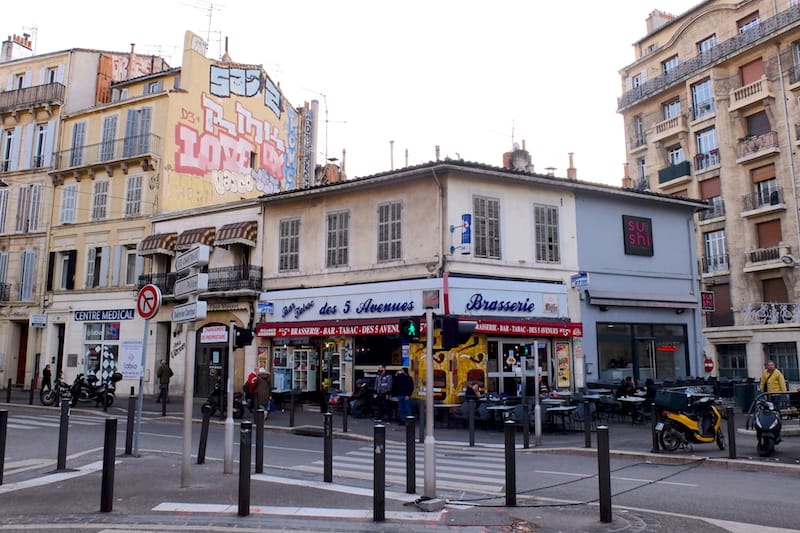
Marseille: Cinq-Avenues
 When locals say that all roads lead to Cinq-Avenues, they aren’t just being figurative. The neighborhood’s nucleus is a star-shaped intersection at which cars, buses, trams and scooters seamlessly crisscross in a marvel of urban choreography. The quartier actually inherited its name from the busy junction, which, ironically, has six not five (cinq) streets – three grand boulevards and three avenues.
When locals say that all roads lead to Cinq-Avenues, they aren’t just being figurative. The neighborhood’s nucleus is a star-shaped intersection at which cars, buses, trams and scooters seamlessly crisscross in a marvel of urban choreography. The quartier actually inherited its name from the busy junction, which, ironically, has six not five (cinq) streets – three grand boulevards and three avenues.
If Marseille is a city of 111 villages, Cinq-Avenues is a village that feels like a mini-metropolis, with its daily morning market, high density of shops, a movie theater and a sprawling park that houses one of the city’s most majestic monuments, the Palais Longchamp.
Brimming with locally owned storefronts, the vibrant neighborhood is where the fleuriste, the boulangerie and the boucherie know your name – and each others’, thanks to the active neighborhood association. Many of the businesses are eateries, making Cinq-Avenues a veritable foodie paradise, one that offers a snapshot of Marseille’s diversity: U Mio Paese, a Corsican deli, Pizza Charly, a popular pizza truck, and Phénicia, a Lebanese/Armenian restaurant run by sisters. Foch 2000, a butcher shop, makes the famous Sôcisse de Marseille while its neighbor, Maison Calambo, has been serving seafood platters since 1946.
Shaped like a stout boot, the toe of Cinq-Avenues starts at the end of Marseille’s main drag, La Canebière, and stretches north to the bustling Boulevard Sakahini. Place Sébastopol’s market stalls and café terraces sit to the east while the aforementioned limestone palace marks the western border. This architectural stunner sparked the neighborhood’s growth – it was built in 1869 to commemorate the construction of the Canal de Marseille, which transports much-needed water from the Durance River to the city.
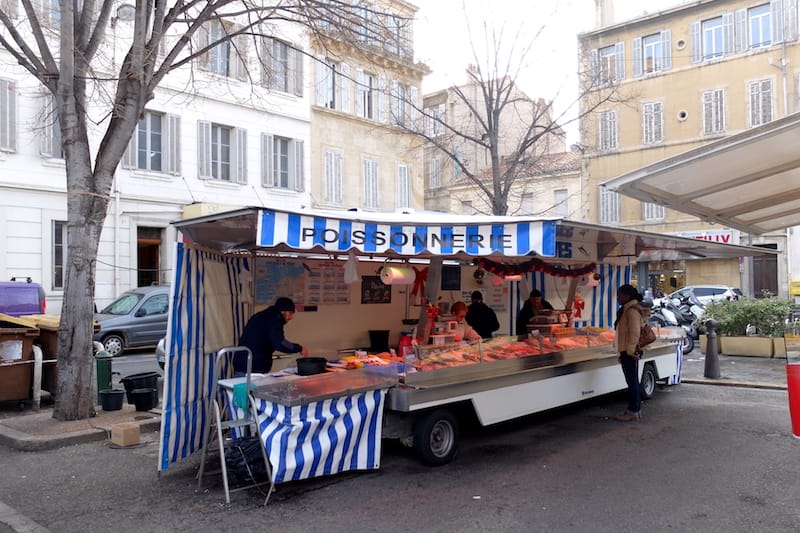
Since its start, Cinq-Avenues has welcomed a steady stream of locals drawn to its village vibe. The tram’s construction in 2007 made it even more geographically desirable. Recently, a wave of young couples and families have arrived, lured by the park and the stylish Art Deco buildings priced lower than the hipster ‘hoods of Vauban and Saint-Victor.
They convene at the Cane Bière (a beer bar whose name winks at Marseille’s most famous road) and the bar à vin Bistrot de Margaux. A sign that Cinq-Avenues is trending? Two culinary favorites, pâtisserie Bricoleur de Douceurs and fromagerie Art de la Fromagerie, have opened their second locations here. The recent uptick hasn’t changed the communal spirit. Just pop into Monsieur Madame, a café that’s chock-a-block with vintage décor, to find a mix of retirees, long-standing locals, moms with their kids, and freelancers tapping away on laptops.
From a bird’s eye view above Marseille, Cinq-Avenues is quite central, its southern border just a mile north of the Vieux Port. Yet, in spite of the plethora of public transport that passes through, visitors rarely make their way to this 4th arrondissement quartier. Which is a shame, because the food options are some of the best in the city. Plus, the Palais Longchamp’s two museums, the Musée des Beaux Arts and the Musée d’Histoire Naturelle, are fresh off a face lift – with the latter’s makeover to be completed in April 2020. And you can always walk off your meal at the verdant park behind them. – Alexis Steinman
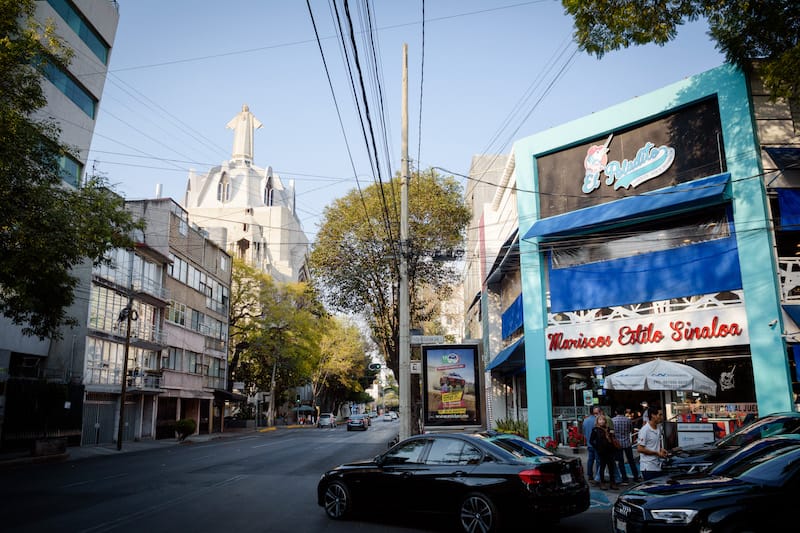
Mexico City: Narvarte and Del Valle
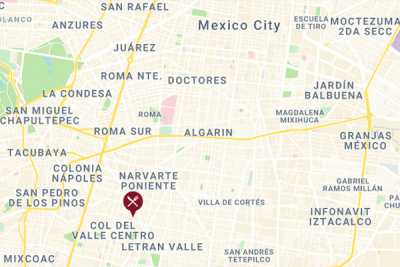 Just southwest of the heart of Mexico City are two neighboring barrios that keep us coming back for more – Colonias Narvarte and Del Valle. Both have maintained their residential vibe and urban working spirit despite the popularity of their hip northern neighbors, Roma and Condesa. And both followed similar development patterns: Formerly rural areas – haciendas and small towns – these neighborhoods were in full urban swing by the 1950s and 60s.
Just southwest of the heart of Mexico City are two neighboring barrios that keep us coming back for more – Colonias Narvarte and Del Valle. Both have maintained their residential vibe and urban working spirit despite the popularity of their hip northern neighbors, Roma and Condesa. And both followed similar development patterns: Formerly rural areas – haciendas and small towns – these neighborhoods were in full urban swing by the 1950s and 60s.
So instead of Roma’s Art Deco architecture or the Centro Historico’s Colonial mansions, there are some quirky (and often stunning) apartment buildings in the Streamline Moderne style, inspired by aerodynamic design; Colonial Californiano single-family residences, inspired by the Spanish Colonial Revival structures that populate southern California; and grandiose Catholic cathedrals built with a modern artistic vision.
As we walk the streets of these solidly middle-class neighborhoods (the Montessori schools and hipster barber shops give it away), it’s easy to get a feel for the lives of ordinary city residents, as office workers head off to work and quieter streets reveal quesadillas steaming over comals and neighbors walking their dogs. Yet Narvarte and Del Valle have recently experienced a blossoming of new businesses and renewed vibrancy, the result of many young Mexican entrepreneurs looking for opportunities away from the expensive rents of Mexico City’s most central areas.
Great coffee shops and bakeries always seem to be the harbingers of an up-and-coming neighborhood, and Narvarte and Del Valle are no exception – AlmaNegra, Mandrake, Telser, Black Rabbit, Pan Nube and Costra are all supplying caffeine and carbohydrates to gleeful locals and visitors alike. That said, neither ‘hood has turned their back on their roots. Tizne Tacomotora serves amazing tacos, heavy on smoke and smokiness (think brisket and smoked pork belly), while Vilsito, Narvarte’s famous mechanic-shop-cum-taco-stand still outshines many of the city’s other taco al pastor joints. Las Tlayudas cooks up traditional Oaxacan fare, and Fonda Margarita, quite possibly the area’s most famous breakfast joint, continues to delight palates with thick guisados and cinnamon-y cafe de olla. Both neighborhoods have small, local food markets, bustling each morning with so many delicacies it would be impossible to pick favorites – just go and eat your way down the aisles.
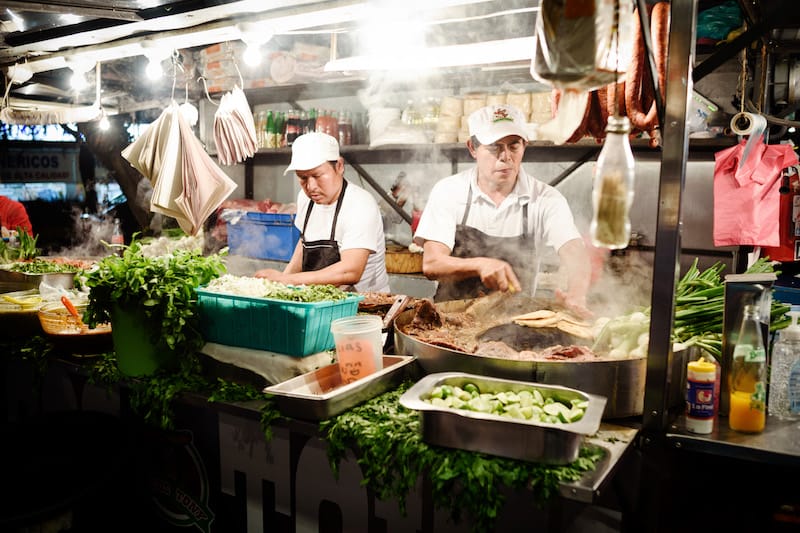
Even though several large, busy avenues cut through these two neighborhoods, there are pockets of small streets for ambling and mom-and-pop shops that have survived the sudden attention on this part of the city. A massive Jesus towers over the Corazon de Maria church where famous Mexican singer Luis Miguel was baptized, and the Templo de la Medalla Milagrosa – a little further out of the way but worth a visit – is a supreme example of the architecture of Felix Candela (he also designed the Templo de Santa Monica in Del Valle).
The tower of the Secretariat of Communication and Transportation in Narvarte, whose façade was created by artist Juan O’Gorman, is another iconic piece of 1950s architecture, and the two big neighborhood parks draw basketball players and dog walkers. Las Americas Park in Narvarte has an outdoor theater and is surrounded by tiny cafés and taco spots, while Parque Tlacoquemécatl “el Tlaco” in Del Valle is not only lovely for an outdoor lunch (there are tables and chairs set up under the trees) but is also home to a tiny chapel, Nuestro Señor del Buen Despacho, and a Sunday organic market.
If museums and high-end restaurants are your aim, or if constant nightlife and upscale boutiques are what you need to have a good time, these two neighborhoods might not be what you’re looking for. But if you want a taste of the city’s local side, look south to Colonias Narvarte and Del Valle – that’s where you’ll find us this year. – Lydia Carey
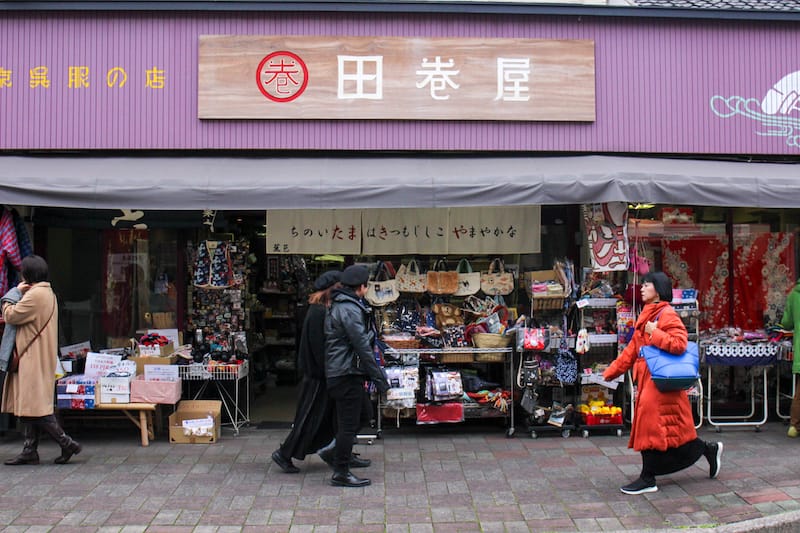
Tokyo: Kiyosumi Shirakawa
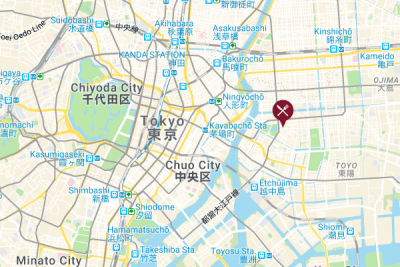 Tourists and Tokyoites alike may think they have little reason to cross the Sumida River, which marks the city’s eastern flank. The most famous site is Tokyo Skytree, a 630-meter structure that has become a symbol of the city’s skyline. Yet look closer to the ground, and you’ll find a far better reason to make the journey to this side of Tokyo: the neighborhood of Kiyosumi Shirakawa.
Tourists and Tokyoites alike may think they have little reason to cross the Sumida River, which marks the city’s eastern flank. The most famous site is Tokyo Skytree, a 630-meter structure that has become a symbol of the city’s skyline. Yet look closer to the ground, and you’ll find a far better reason to make the journey to this side of Tokyo: the neighborhood of Kiyosumi Shirakawa.
A casual stroll through the streets of Kiyosumi Shirakawa can produce a puzzling contrast. For the most part, slightly dilapidated houses and shuttered shops give it a sleepy feel, like a place that is still well loved but slowly fading from memory. Then, all of a sudden, a sleek gallery, trendy coffee shop or brightly lit store might slide into view, marked by a gaggle of customers arriving, leaving or even queuing.
Kiyosumi Shirakawa has earned itself a reputation as an art and coffee town, harboring several galleries in addition to the Tokyo Museum of Contemporary Art and at least a dozen coffee shops scattered around its streets. With countless hidden independent stores, cafés and bakeries, and with very few chains, it exudes a cozy neighborhood feeling combined with a laid-back trendiness.
There is no direct translation in Japanese for “gentrification,” but it’s nevertheless a concept that Kiyosumi locals and more recent residents appreciate well. The general consensus is that the area began its most rapid transformation after the California-based Blue Bottle Coffee marked its entry to Japan by opening a flagship café and roastery there in 2015.
However, the coffee boom was already brewing. Cream of the Crop, which opened in 2012, spawned Arise, when a former employee struck out with his own venture. Decked out with skateboards and other quirky decorations, its popularity saw an equally trendy sister store open the following year. Hip caffeine-seekers also bow to the southern hemisphere, stopping by the New Zealand-born Allpress Espresso or the New Zealand-inspired Iki Espresso, both of which serve highly respectable flat whites.
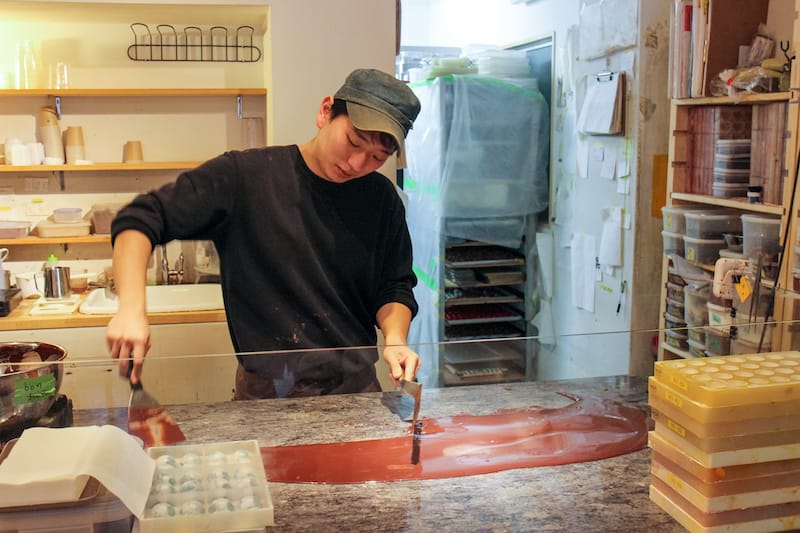
Despite riding the third wave, the area still retains many signs of the old ways of life. Narrow stores sell traditional food items, such as tsukudani, simmered small fish or seaweed used as salty-sweet rice topping, grilled eel, or chicken on sticks. Yet these are a stone’s throw from places like Ramvic, a cake shop seemingly located in an old garage, popular for its choux crème and distinctive for its graffiti-style exterior.
Many of these new ventures focus on high-quality Japanese food products. Bee Friendship offers a selection of honey, especially from Ehime Prefecture, where the owner is originally from. Cheese no Koe (literally “The Voice of Cheese”) specializes in artisan cheese from Hokkaido in the north along with highly popular cheese soft cream. Fujimaru Winery serves Japanese wines as well as an international selection, and Folkways Brewing takes German and English malt and American hops and uses them to brew beer with water from Koto Ward, where Kiyosumi is located.
Perhaps most charming of all is the evident camaraderie between the stores that has sparked countless collaborations. Artichoke Chocolate, in addition to selling high-quality sweet temptations that they temper in store in front of customers’ eager eyes, uses white wine from Fujimaru in some of its chocolates. The winter special flavor is yuzu, sourced from Yasai no Chikara (literally “the power of vegetables”), the sister store of Cheese no Koe. Nois, a bicycle store that even sells specialist dog carry baskets, also has a lineup of French cakes baked by a French teacher who lives behind the shop. Once a month, another local turns the store into a café with his own coffee pop-up, all beans roasted in his kitchen at home. Kiyosumi Shirakawa is a neighborhood in the truest sense of the word – it feels, well, neighborly. – Phoebe Amoroso
Editor’s note: We will be republishing dispatches from these neighborhoods all week. Stay tuned!
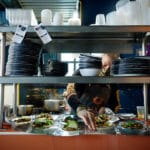 January 18, 2021 City, Interrupted
January 18, 2021 City, Interrupted
Considering that the pandemic is still raging, the annual travel lists that come out at […] Posted in Elsewhere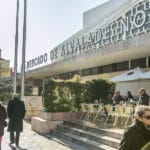 January 21, 2021 Mercado de Alvalade
January 21, 2021 Mercado de Alvalade
It’s hard to imagine now, but Alvalade, a neighborhood north of downtown Lisbon and […] Posted in Lisbon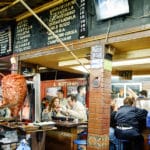 January 14, 2020 Going Deep
January 14, 2020 Going Deep
As the calendar year turns over, we’ve grown accustomed to the barrage of lists telling […] Posted in Special category, Marseille
Published on January 14, 2020
Related stories
January 18, 2021
Elsewhere | By Culinary Backstreets
ElsewhereConsidering that the pandemic is still raging, the annual travel lists that come out at this time of year have taken on a new shape: Rather than promoting destinations, the focus is on the places that people want to visit when things open back up, visions buttressed by more personal recollections. Travel is still elusive…
January 21, 2021
LisbonIt’s hard to imagine now, but Alvalade, a neighborhood north of downtown Lisbon and close to the airport, was comprised mainly of fields in the early 20th century, with farms in the area supplying the Portuguese capital with dairy products as well as fresh fruits and vegetables. Those farms may be long gone, but this…
January 14, 2020
Marseille | By Culinary Backstreets
MarseilleAs the calendar year turns over, we’ve grown accustomed to the barrage of lists telling us where to travel during the next 12 months. Often these places are a country or even a whole region – you could spend an entire year exploring just one of the locations listed and still barely make a dent.…







































